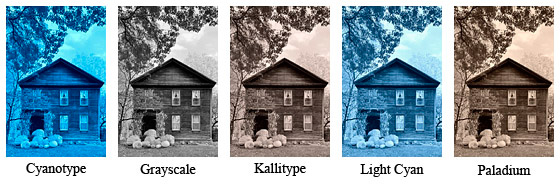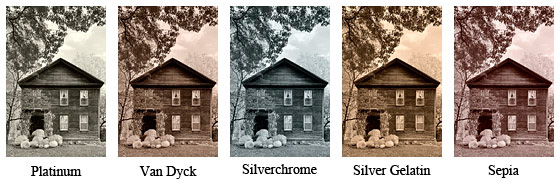Rules and Guidelines
A. CLASSES of MEMBERSHIP
In The General Subject category members compete at two levels:
Salon Class – Members in the Salon Class are the more advanced photographers who have been selected or approved by the Executive Committee. Selection or approval may be based on a portfolio of at least ten works submitted by a new member or through an analysis of scores the member has achieved in the prior year’s competitions.
Class A – Members in the Class A are all those photographers who have not been selected to be members of the Salon Class.
New Members – All new members start in Class A. New members may request to start in the Salon Class by submitting 10 images (or a personal photo website) to the Executive Committee for review. A majority positive vote by the Executive Committee will place the new members in the Salon Class immediately.
B. PHOTO CATEGORIES and SUBMISSIONS for COMPETITIONS
1. CATEGORIES
There are two categories of photographs for Club competitions: Assigned Subject and Open Subject.
a. Assigned Subject
The purpose of Assigned Subjects is to encourage members to create new works meeting the required subject. The assigned subjects for each season are selected by the Assigned Subject Committee and approved by the Executive Committee. The assigned subjects are made known to the entire membership in February or March of each year for the next season’s competitions. These subjects cover the eight competition nights, September through April. Assigned Subject photographs must have been taken after the release date of the subjects. Photographs taken before that date will be rejected for competition. A composite image may be submitted in the Assigned Subject category. However, a major element of the composite image must be taken after the release date of the assigned subjects. All exposures and photographs comprised in the submitted image must be taken by the submitting member. This restriction doesn’t apply to filters and textures.
There are Assigned Subject competitions monthly in the digital category. Your assigned subject image may be in color or black and white. For the Assigned Subjects, all photographers, whether from Salon or Class A, compete as one group. Assigned Subject photographs are rated by the judges, but there are judge comments only for the first and second place winners.
All assigned subject photographs must adhere to the subject. If, in the view of the Executive Committee, a photo does not adhere to the given subject, it will be removed from the competition results. In addition, if a judge feels a photograph does not adhere to the subject, the judge may give it a lower score.
b. Open Subject
The Open Subject is for any photograph of the member’s choosing. Unlike Assigned Subject submissions, Open Subject photographs may have been taken at any time. Open Subject photographs are judged separately for the Salon Class and Class A. Judges will rate each photograph, and one judge will give comments. There are Open Subject competitions monthly in digital, color print and black and white print. Digital submissions may be in color or black and white. Color print submissions must be in color, and black and white submissions must fit the black and white category definition (see “Prints” below).
2. PRINTS
All Prints must to be large enough to be easily seen by the judges and others in attendance. Judges may detract from scores if the print is less than 11″ X 14″.
All prints must also fit in the judges’ light box for viewing. This means that a maximum size, including mounting and matting cannot exceed 24″ wide or 20″ tall.
All prints must be mounted, but not necessarily matted. While a simple matte often enhances a photograph, it is entirely up to the maker as to whether photograph is matted or not. No photo is to be submitted in a frame. Also, neither glass nor Plexiglas is permitted.
All prints must be properly marked with the Photography Club labels filled out completely. These are provided by the Club and should be placed in the upper left hand corner of the back of the mount when the photograph is turned face down.
A Black & White photo is a monochrome image that has a single hue. Traditional monochromatic toning hues include black & white, sepia, cyanotype, platinum, and silver gelatin. All types of monochromatic image types are permissible in the Black & White print category. A Spot color image, where a single element in the image is colored while the rest of the image is monochrome is not considered to be Black and White and is not eligible to compete in the Black & White Print category.
Examples of acceptable image types into the Black & White Print General Subject Class A and Salon Categories:
3. DIGITAL IMAGES
a. General
Black and White or Color images may be submitted into the digital projection categories, and compete together.
Unless otherwise directed by the digital collector, digital files must be received by the Monday (3:00 pm) prior to the competition night. Email your submissions to the digital collector, DHFore@hotmail.com. Any images received after the cutoff date will not be included into competition.
Our digital image collector will insert the submitted entries into the appropriate category and create a slide show of the images that will be run at the competition meeting.
b. Digital File Specification
Submitted images will not be edited by the collector. The file you send should be the final edited copy, and fall within the guidelines outlined below. As a general rule of thumb, sharpening should not be done until the image is properly sized according to the specifications outlined below. Further, it should be the final step prior to saving in your workflow.
1. Sizing Your Image
Images you submit into competition should be JPEGs and must fit into an area that is between 1920 pixels wide by 1080 pixels high. You can set the resolution to 100 dpi.
It should be noted that the majority of your images, whether they’re landscape or portrait, will be using the 1080 pixel height, as most images from cameras are 2:3 ratio.
Unless you specifically crop your images to a 16:9 format panoramic, if you were to set your landscape portrait long side to 1920 pixels, your image will go over the maximum 1080 pixel height limit.
Bottom Line: If your image orientation resembles this:
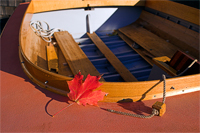
Standard Landscape Orientation – Set the height to 1080 and let the width auto-adjust
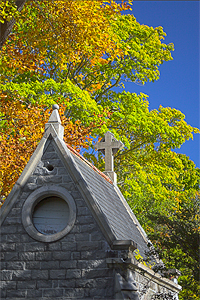
Portrait Orientation – Set the height to 1080 and let the width auto-adjust
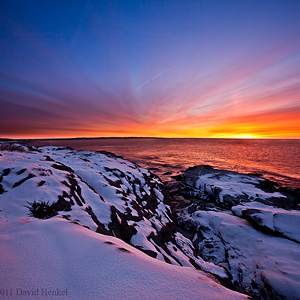
Square Orientation – Set the height to 1080 and let the width auto-adjust
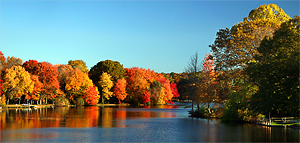
Panoramic Orientation – Set the width to 1920 and let the height auto-adjust
***Please have them final – edited for the most part to save me time (i.e. cropped, processed, sharpened, etc).***
For most image editing programs, the user has control over setting both pixel size and resolution.
In Photoshop this is done by clicking on Image–>Image Size
In the Image Size interface, you have two main sections: Pixel Dimensions, and Document Size (Resolution)
First change the resolution of your image to 100 dpi.
Then adjust your image pixel size of your image. For standard images set the height to 1080 pixels. For a panoramic image, set the width to 1920. The other dimension should adjust automatically to maintain correct proportions.
Your image is sized properly and can be saved as a JPEG (Maximum Quality Setting).
2. Naming Conventions for Submissions
Digital photographs should be named as follows.
Open Subject: Year_Month_OS_Class _Title_Name.jpg
Your class will determine whether you place an “A” (Class A) or “S” (Class Salon) in your open Subject file name.
Example: an Open Subject entry for David Henkel, a Salon member, for October of 2009 Titled Summer Fun would be:
09_10_OS_S_Summer-Fun_DHenkel.jpg
Example: an Assigned Subject entry for David Henkel for September of 2009 Titled Summer Fun would be:
09_09_AS_Summer-Fun_DHenkel.jpg
3. Number of Photographs Allowed (updated policy Jan. 2018)
Beginning January 2018, members may enter one Assigned Subject and two Open Subject images at each month’s competition:
Assigned Subject
This is a digital submission. The image must conform to the Assigned Subject for the month. It may be in color or black & white. Class A and Salon are combined in this category.
Open Subject
Members may enter an image in any TWO of the three Open Subject categories below – no more than one image per category:
- Digital Open Subject Your submission may be color or black & white
- Color Print Open Subject
- Black & White Open Subject
If a member submits more than the allowed two Open Subject images, the image with the highest score will be disqualified and the score will not count.
4. Make-ups (updated policy Jan. 2018)
If a member misses a competition, one make-up image per eligible category may be submitted at any time during the competition season (A maximum of 3 per competition).
New members may not submit make-ups for periods prior to the date the member joined the club.
Any make up photo will be scored and receive comments from a judge.
There are no make-ups for Assigned Subjects.
When you submit a digital image for make-up, use the following file naming convention:
Year_Current Month_OS_Class_MU_Title_Maker.jpg
For instance, if David Henkel were to submit a make-up image into the November 2012 competition with the title of “New York,” his file would be named
12_11_OS_S_MU_New York_DHenkel.jpg
C. JUDGING SYSTEM
We use a three-judge scoring system, with each judge scoring a photograph from 5 to nine points. The three scores are then added together. The lowest combined score is a 15, and the highest is a 27. When possible we use outside judges (non-Club Members) with a visual arts background.
Besides giving a numeric score, judges are asked to critique each photograph in the open classes and the first and second place winners of the assigned subjects. The purpose of these critiques is to share reasons behind given score and provide constructive criticism that the maker can use to improve his or her work.
D. PHOTOGRAPHS OF THE YEAR
Our final competition of the year is the selection of the Club’s digital and print “Photograph of the Year”.
Participants may enter up to a total of three photographs into the competition that have already been submitted during the current competition season (2018-2019) into Black & White Print, Color Print, and Digital Projected Image categories – with a maximum of 2 images in any one category. Digital photos may be either from the open or assigned subjects. Photographs submitted by Class A members may be edited or altered from the way they were originally submitted. Photographs submitted by Class Salon members may not to be edited, altered or changed in any way from the way they were originally submitted. Salon and Class A members compete separately for photograph of the year awards in the Black and White, Color Print and Digital. From the Salon and Class A winners the judges will select a “Color Print Photograph of the Year”, a “Black and White Print Photograph of the Year” and a “Digital Photograph of the Year”.
E. AWARDS
Each month the First and Second Place winners in Salon and Class A are recognized on our Club website.
At our final gathering of the year we recognize the members with the highest cumulative scores in each of the five categories. In addition, we award trophies to the winners with the highest combined cumulative scores (open and assigned) in Black & White Prints, Color Prints, and Digital Images.
F. DUES
Dues are established annually. For dues information please go to “About Us and click on Dues.
G. DIGITAL PHOTO ESSAY CONTEST
In the spring we hold A Digital Photo Essay. All participants compete together in one level (Salon and Class A together).
The Digital Photo Essay is limited to 5 minutes in length per entry and may include video. Sound may include the member’s own commentary, taped music, or sound effects.
H. GENERAL
To encourage improved work, entries other than first, second place winners may be re-entered if remade to incorporate the judges’ suggestions.
I. TIME & DATES
All print entries will be accepted on competition night up to 7:15 p.m. The meeting begins at 7:30 p.m. sharp.
Unless otherwise directed by the image collector, all digital projection images are due the Monday (3:00 pm) prior to the competition date.
Competition is usually held on the first Wednesday of each month beginning in October. For the first month of the season, September, the dates are reversed, so members may share images from the summer on the first Wednesday of the new season. The competition is held on the third Wednesday of September.
Check the calendar for accurate competition dates for each season.
